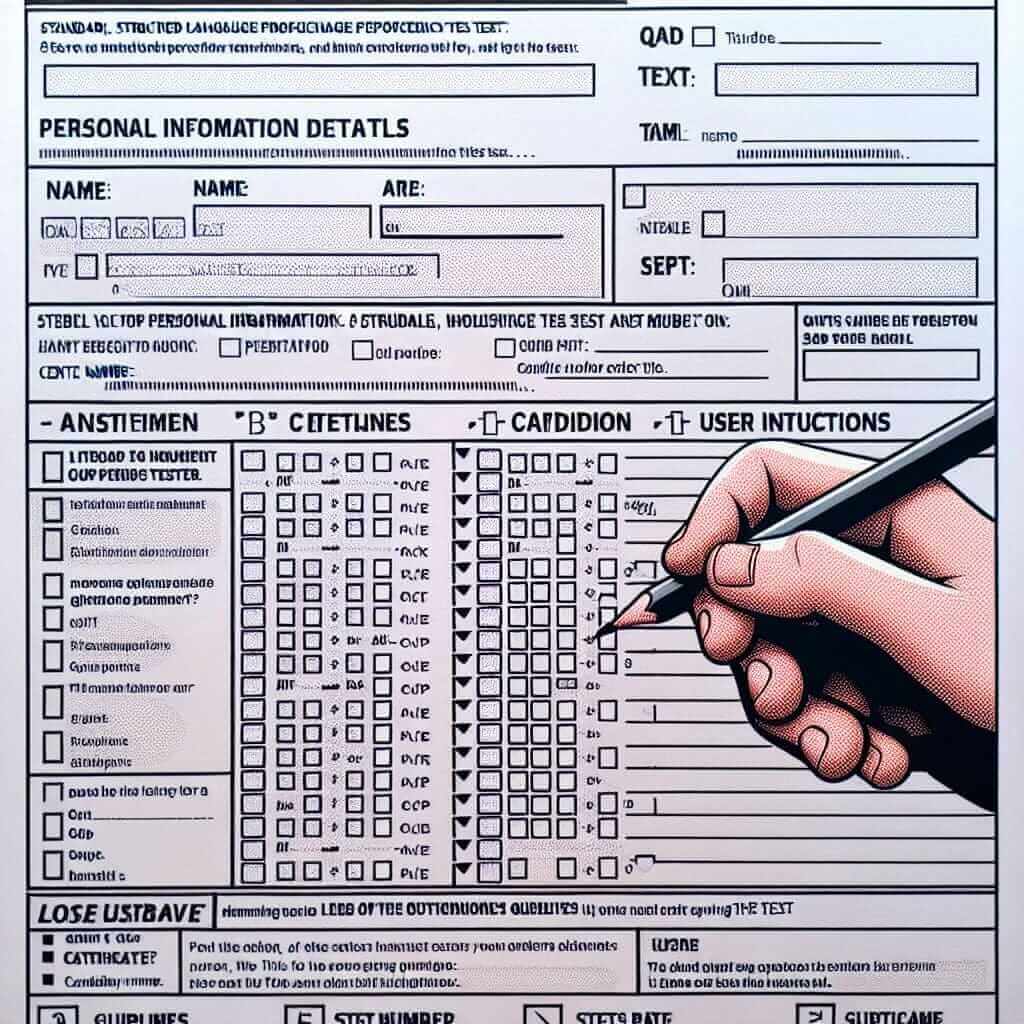As an IELTS instructor with over two decades of experience, I understand the importance of mastering every aspect of the IELTS exam, especially the Reading section. One crucial element that often gets overlooked is understanding how to correctly use the IELTS Reading answer sheet.
Properly completing your answer sheet is just as important as selecting the right answers. Even minor errors in transferring your answers can affect your overall score. In this guide, we’ll delve into the intricacies of the IELTS Reading answer sheet, providing you with the knowledge and confidence to ace this section of the exam.
Understanding the IELTS Reading Answer Sheet
The IELTS Reading answer sheet is where you will record your answers for the Reading section. It’s essential to familiarize yourself with its layout and requirements to avoid any missteps during the exam. Here’s a breakdown:
Key Features:
- Personal Information: This section requires you to accurately fill in your personal details, including your full name, candidate number, and test date. Double-check for any errors.
- Answer Area: This section is dedicated to recording your answers for all 40 questions. Each question will have a corresponding numbered box where you’ll write your answer.
- Answer Format: The answer format will vary depending on the question type. You may be required to:
- Write a word or a number.
- Write a short answer within a specified word limit.
- Complete a sentence.
- Match headings to paragraphs.
- Label a diagram.
Tips for Accurate Answer Sheet Completion
- Read the Instructions Carefully: Before you begin transferring your answers, thoroughly read the instructions provided on the answer sheet. Pay close attention to any specific requirements or limitations.
- Use Pen: Always use a black or blue pen to fill out your answer sheet. Pencils are not allowed.
- Write Clearly and Legibly: Ensure your handwriting is clear and easily readable by the examiners. Illegible answers can result in lost marks.
- Stay Within the Boxes: Write your answers within the designated boxes provided for each question. Avoid writing outside the boxes, as this may lead to your answer being disregarded.
- Check Word Limits: Be mindful of any specified word limits for short-answer questions. Exceeding the limit may result in penalties.
- Proofread Your Answers: Once you’ve transferred all your answers, take a few minutes to proofread your work carefully. Check for any spelling errors, grammatical mistakes, or missing answers.

Example from an IELTS Reading Passage
Let’s consider a “True/False/Not Given” question type commonly found in the IELTS Reading section.
Passage Extract: “The use of renewable energy sources has increased significantly in recent years.”
Question: The adoption of renewable energy sources has remained stagnant over the past few years.
Answer: False.
On your answer sheet, you would locate the corresponding question number and clearly write “False” in the provided box.
Essential Tips for IELTS Reading Success
Beyond mastering the answer sheet, here are additional tips to boost your performance in the IELTS Reading section:
- Manage Your Time Wisely: Allocate your time effectively to complete all three reading passages within the 60-minute time limit.
- Skim and Scan for Information: Develop efficient skimming and scanning techniques to quickly locate relevant information within the passages.
- Improve Your Vocabulary: Expand your vocabulary to better understand complex texts and answer vocabulary-based questions accurately.
- Practice Regularly: Consistent practice with sample IELTS Reading tests is crucial to familiarize yourself with the question types, improve your reading speed, and refine your test-taking strategies.
Conclusion
Acing the IELTS Reading section requires a combination of strong reading skills and careful attention to detail. By understanding the intricacies of the answer sheet and implementing the tips outlined in this guide, you can approach the exam with confidence and maximize your chances of achieving your desired score. Good luck!